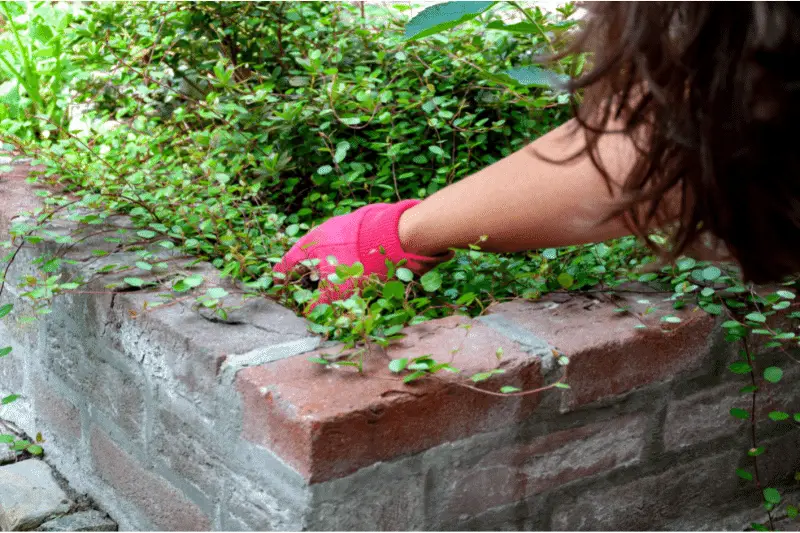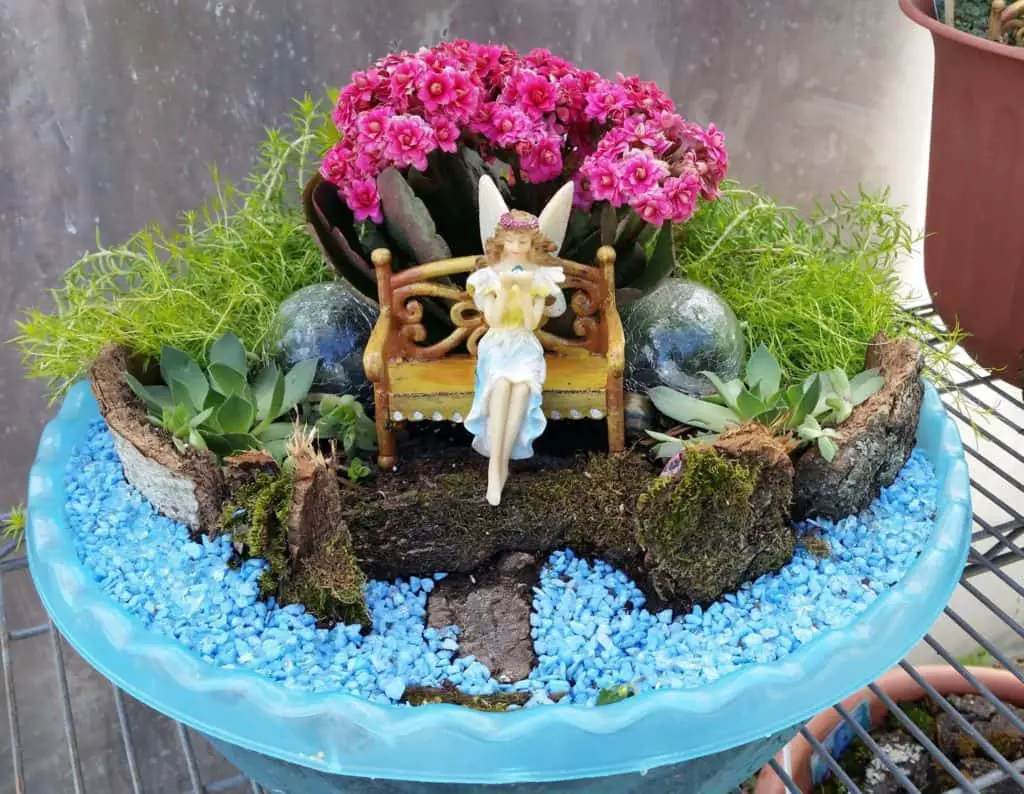This page may contain affiliate links that allow us to make a small commission from qualifying purchases (at no extra cost to yourself). We appreciate your support.
Plenty of gardeners and enthusiasts adore the idea of creating their very own fairy garden. But, the maintenance and care needed for keeping the area pristine can be quite different from classic gardens. So, how would one maintain a fairy garden?
Plants should be fed, watered, and free from weeds or creepers. Ornaments should be coated with polyurethane sealant or UV Resistant Acrylic Coating and placed in areas with partial shade or filtered light. Fairy gardens should be moved indoors during harsh weather conditions to prevent damage.
Although maintaining a fairy garden does demand more steps and approaches than a regular garden, it’s not as challenging or perplexing as one may expect. Join us as we discuss everything you need to know about keeping your fairy garden looking magical all year round.
Weed Plants Regularly

Despite your choice of plant life and decor, you’ll need to make sure weeds are nipped in the bud before things get out of hand. Thankfully, since most fairy gardens are quite small, it’s fairly easy to spot and remove invasive weeds.
Still, it’s incredibly important to make sure you remove weeds before watering, as they can soak up all the hydration that was intended for your beloved plants. Many creepers can easily take over an entire fairy garden if left to their own devices, even if the creepers generally live on a neighboring property.
Some of the best ways to reduce the risk of weeds in your fairy garden include adding mulch over the soil. You could use non-organic such as a layer of gravel or stones where there are no plants (which can be used to add water features as well). Otherwise, you could use an organic variant such as bark, pine needles, or clippings.
Feeding Plants Regularly
While many of the whimsical elements come from visually appealing additions, decorations, and accessories, the plants’ well-being is ultimately most important. You’ll need to make sure that the plants are fed regularly or according to the species’ requirements.
This will all depend on your choice of plant, as the nutritional demands of plants vary drastically depending on the type. Many enthusiasts choose to put succulents in their fairy gardens for easy care. But, most enthusiasts choose bright and vibrant flowers, shrubs, and viney plants for a look that’s more in line with the magical world of fairies.
The best and easiest way to make sure all of your plants are well-fed is to use a high-quality plant feed. When you choose to feed them is up to you, depending on the species. Feeding them every few weeks is best, but every few months will greatly assist the overall health and look of the plants.
Watering Your Plants Regularly

In some cases, your plants will need to be watered more often than the species demands. This especially occurs in cases where you’re using a container for the fairy garden, as the soil in containers can hold less moisture than in the ground. It’s best to use a watering can equipped with a showering nozzle, as this avoids the risk of flooding or damage to any plants or decor.
Protecting Fairy Garden Plants and Accessories
Many containers and aesthetic additions are not cut out for the weather and can become tarnished or dull over time. You’ll need to make sure that the accessories and decor are properly protected from the elements.
Winter
Winter can bring all sorts of threats to your fairy garden, and the best option is to bring ornamental features indoors. While ceramic, polymer clay, stone, and resin generally withstand rain, they should still be brought in during winter.
Seal fairy garden accessories with a polyurethane sealant to protect them from rain damage, especially if the main materials include wood or metal. Cover plants with frost protection fleece during winter if needed, and remove it as soon as it’s no longer necessary.
Summer
Garden ornaments can succumb to sun damage, discoloration, and fading when exposed to UV radiation for lengthy time frames. The best approach is to choose decorations that are finished with high-quality resin. Cheap resin can still lead to cracking, while the high-quality resin is more tolerant of such conditions.
Make sure ornaments are positioned in shady areas during summer to avoid the related risks. Polyurethane sealant does also help these circumstances, but UV Resistant Acrylic Coatings are more effective at protecting decorations and accessories during summer. Always choose a high-quality product for protecting decorations, as cheaper variants may flake or yellow over time.
Keeping Your Fairy Garden Clean
The entire area within the fairy garden can become littered with stray natural debris, which will drastically affect the overall look and feel of the space. Clear up any dead leaves, especially during autumn/fall. Excessive dead leaves will pile up and create an unsightly situation and bring various other problems such as moisture and even bugs or critters.
If you spot any vines or creepers that seem to be getting way too close for comfort, cut them back to make sure the fairy garden is protected from intrusion. The plants and flowers should be clipped with scissors or gardening shears. Fairy garden plants still need to be pruned to make sure they grow healthily.

Pathways and water features can be improved by adding new gravel or stones. Any ornaments made from resin, stone, and wood should be properly cleaned with warm water and a drop or two of washing liquid. Use a gentle brush to remove any dirt, dust, and scum from the ornaments to renew their color and shine.
Ornaments with embellishments and wooden decorations can be more challenging to keep spick and span over the years. Dirt and grime can easily become lodged in crevices, making it extremely tough to remove completely. It’s best to clean these items or at least check up on them more frequently.
Refurbishing Ornaments
While you may not be able to revive a shattered ceramic mushroom, many stress-inducing tarnishings can be fixed in fairy garden ornaments. Rust can usually be removed with a nail file, and minor cracks can be repaired with strong adhesive.
Although owning a fairy garden takes more work than many other garden types, the rewards are certainly worth it. Always make sure to do regular check-ups on your fairy garden plants and ornaments, use proper products and placement, and protect them in harsh weather conditions to guarantee a wonderfully magical space.

Meet Brad, the creator behind Vivarium Vibes, where his deep connection with nature and animals truly comes to life.
